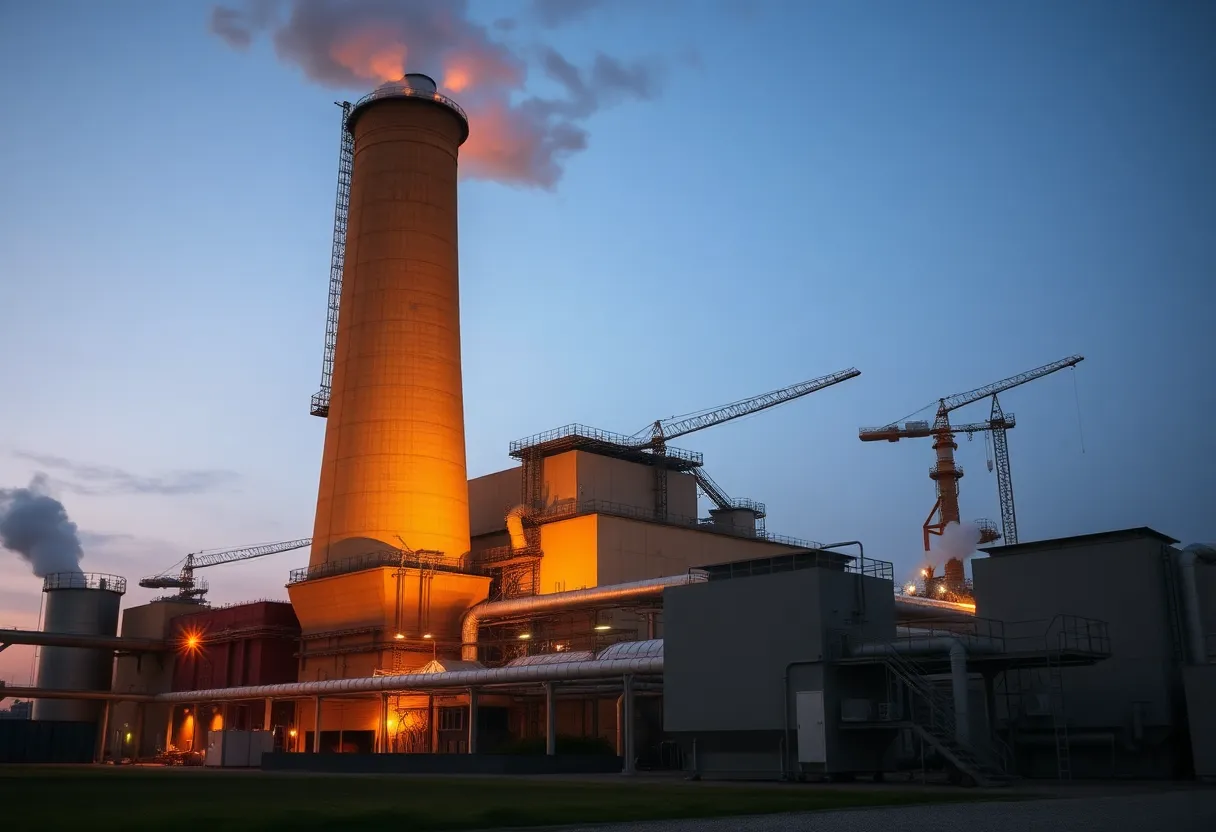Dotternhausen, Germany, August 18, 2025
News Summary
A 10 MW industrial waste‑heat recovery system has been installed at the Holcim cement plant in Dotternhausen, Germany. Heat is taken from the rotary kiln exhaust via a heat exchanger mounted at about 70 metres and transported by a high‑temperature thermal oil cycle to plant processes, local heat networks and an on‑site ORC power unit. The central generator is a large‑scale ORC designed for industrial duty. E.ON delivers the project under an Energy‑as‑a‑Service contract, with financial support from the Federal Ministry for Economic Affairs and Climate Action, aiming to cut Scope 2 emissions and enable wider roll‑out.
Industry project recovers around 10 MW of waste heat at Dotternhausen cement plant
A new large-scale waste-heat recovery installation has been launched at a cement plant in Dotternhausen, Germany. The project recovers about 10 megawatts of otherwise unused heat from the rotary kiln exhaust and uses an industrial-scale Organic Rankine Cycle (ORC) system to turn part of that heat into power while routing the rest to internal processes and potential local heating networks. The work is supported by federal funding from the German ministry responsible for economic affairs and climate protection.
What the project delivers
The installation captures exhaust gases from the kiln and extracts heat at roughly 70 metres above ground using a heat exchanger. Recovered energy is carried by a high-temperature thermal oil cycle to several heat sinks. Intended uses include direct supply of process heat to the cement plant, possible connection to nearby district heating systems, and conversion to electricity using ORC technology.
Technology and equipment
The power element of the scheme is an ORC unit designed specifically for heavy industrial use. The central machine installed is the new eP1000 high-performance ORC system. That system is built to keep turbine efficiency high both at full load and when operating at partial load. This efficiency across operating ranges is important because kiln exhaust heat can vary; the ORC’s performance allows it to respond reliably to changing heat supply.
Who is doing what
The project is a joint effort between the cement producer, an energy infrastructure and services provider, and the ORC equipment supplier. The energy partner is responsible for planning, building, financing, operating and maintaining the installation under an Energy-as-a-Service contract model. This means the cement producer receives the service without having to make an upfront capital payment for the plant.
Expected benefits and aims
The arrangement is framed as a practical step to improve energy efficiency and reduce emissions in a very energy-intensive industrial process. Expected outcomes include sustained energy cost reductions for the plant, lower CO2 emissions and reduced Scope 2 emissions through on-site energy use and power generation. The project is also being positioned as an example of how recoverable process heat can be put to multiple uses and scaled for other sites.
Funding and future plans
The installation received backing from the federal ministry that handles economic affairs and climate protection. Partners say that further roll-outs and additional deployments of similar systems are already included in joint planning, indicating the potential for replication at other industrial locations.
Operational notes and flexibility
Heat is taken from the kiln exhaust stream high on the stack and transferred by the thermal oil loop to the ORC and to plant heat users. The ORC’s design emphasis on maintaining high turbine efficiency at both full and partial load provides operational flexibility when heat supply fluctuates, helping to keep electricity output and heat delivery steady.
Why it matters
The project illustrates how captured process heat can reduce primary energy demand in heavy industry, provide local heating options, and generate electricity without requiring new fuel input. By pairing heat capture with an industrial ORC system and an Energy-as-a-Service delivery, operators can deploy energy-saving equipment with limited direct investment while receiving managed operation and maintenance.
Frequently asked questions
What is being recovered and how much?
About 10 MW of thermal energy is being recovered from the kiln exhaust gases.
Where does the heat come from?
The heat is taken from exhaust gases emitted by the rotary kiln at the cement plant and extracted through a heat exchanger placed at around 70 metres height.
How is the recovered heat transported?
Recovered heat is carried to users by a high-temperature thermal oil cycle, which allows transfer to the ORC unit and to internal plant processes or district heating connections.
What technology converts heat to power?
An industrial Organic Rankine Cycle (ORC) system — the eP1000 — converts part of the recovered heat into electricity. The ORC is designed for large industrial loads and keeps high turbine efficiency at both full and partial load.
Who finances and runs the plant?
The energy infrastructure partner handles planning, construction, financing, operation and maintenance under an Energy-as-a-Service model, so the plant operator avoids upfront capital expenditure for the installation.
What are the environmental benefits?
The project is expected to lower energy consumption and greenhouse gas emissions at the plant, reduce Scope 2 emissions, and support wider decarbonisation goals for energy-intensive industry.
Is this a one-off installation?
Partners have included further roll-outs in their planning, indicating this project is intended as a replicable model for other sites.
Key project features
| Feature | Details |
|---|---|
| Project partners | Plant operator, energy infrastructure & services provider, ORC supplier |
| Location | Dotternhausen, Germany |
| Thermal capacity recovered | ~10 MW |
| Heat source | Rotary kiln exhaust gases |
| Heat extraction point | Heat exchanger at around 70 metres |
| Heat transport medium | High-temperature thermal oil cycle |
| Uses of recovered heat | Internal process heat, potential district heating, power generation |
| Power generation tech | Organic Rankine Cycle (ORC), eP1000 system |
| ORC design focus | High efficiency at full and part load; industrial scale |
| Contract model | Energy-as-a-Service (no upfront capex for plant operator) |
| Funding | Backed by the federal ministry for economic affairs and climate protection |
| Planned follow-up | Further roll-outs and additional deployments are in planning |
Deeper Dive: News & Info About This Topic
Additional Resources
- CemNet: Orcan Energy and E.ON launch WHR project at Dotternhausen plant
- Wikipedia: Waste heat recovery
- Global Cement: New waste‑heat recovery project at Holcim’s Dotternhausen cement plant
- Google Search: Dotternhausen eP1000 ORC Orcan Energy
- World Cement: Holcim, E.ON and Orcan Energy launch joint large‑scale project
- Google Scholar: waste heat recovery cement ORC
- Orcan Energy: News & press (company updates and product info)
- Encyclopedia Britannica: Organic Rankine cycle (search)
- E.ON: Media & press (Energy‑as‑a‑Service announcements)
- Google News: Dotternhausen waste heat recovery Holcim
Author: Construction CA News
The CALIFORNIA STAFF WRITER represents the experienced team at constructioncanews.com, your go-to source for actionable local news and information in California and beyond. Specializing in "news you can use," we cover essential topics like product reviews for personal and business needs, local business directories, politics, real estate trends, neighborhood insights, and state news affecting the area—with deep expertise drawn from years of dedicated reporting and strong community input, including local press releases and business updates. We deliver top reporting on high-value events such as the Rose Parade, Coachella, Comic-Con, and the California State Fair. Our coverage extends to key organizations like the California Building Industry Association and Associated General Contractors of California, plus leading businesses in technology and entertainment that power the local economy such as Apple and Alphabet. As part of the broader network, including constructionnynews.com, constructiontxnews.com, and constructionflnews.com, we provide comprehensive, credible insights into the dynamic landscape across multiple states.




